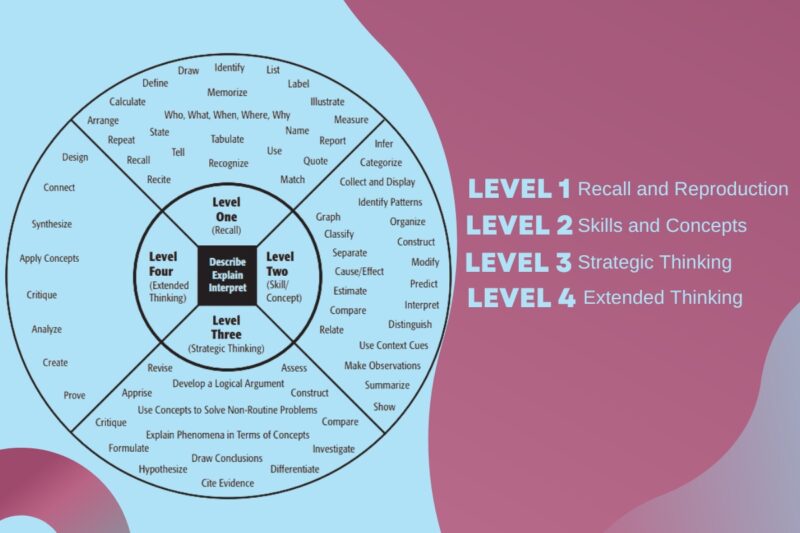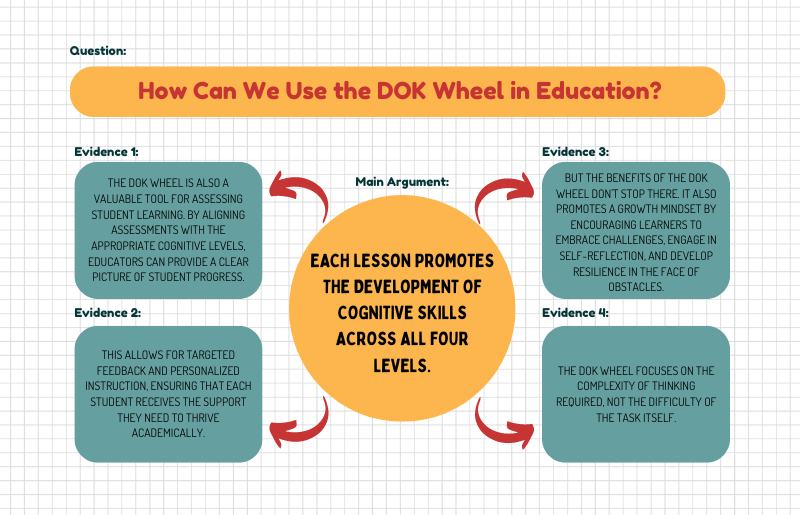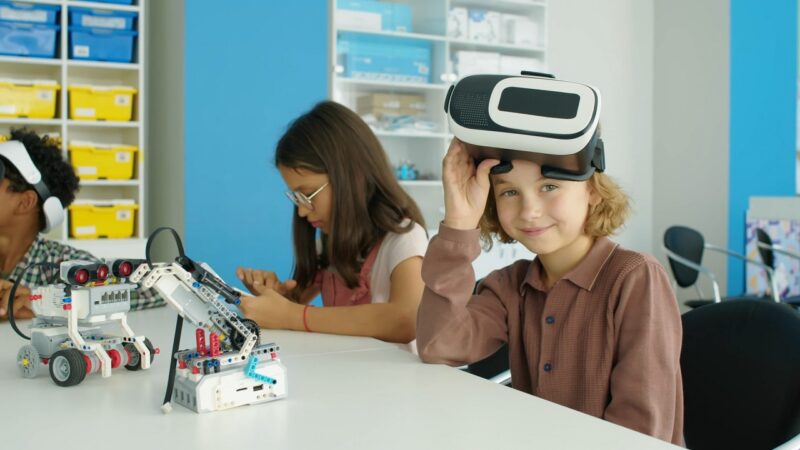Let’s talk about the Depth of Knowledge (DOK) Wheel, a tool that can help us unlock the full potential of our cognitive abilities.
Depth of Knowledge measures how deeply students know, understand, and are aware of what they are learning to answer a question or solve a problem.
It categorizes tasks by the complexity of thinking—not difficulty—used to complete them.
Low DOK does not necessarily mean low difficulty and vice versa.
The Four Levels of Cognitive Rigor

Webb’s DOK is made up of four levels.
Level 1 – Recall and Reproduction
It’s all about recalling and reproducing information. This means remembering facts, terms, and concepts, and it doesn’t require much thinking power.
Level 2 – Skills and Concepts
Level 2 is where things start to get interesting.
Here, we apply the skills and concepts we’ve learned to solve problems, analyze relationships, and make decisions.
It’s like putting our knowledge to work!
Level 3 – Strategic Thinking
Level 3 is all about strategic thinking.
This is where we start to engage in higher-order thinking, like reasoning, planning, and making complex judgments.
We’re not just using our knowledge here, we’re using it in new and exciting ways.
A good example of how to use it is when you are writing an argumentative essay.
Level 4 – Extended Thinking
The final level – it’s all about extended thinking.
This means we need to have a deep understanding of the information and be able to synthesize and evaluate it from multiple sources.
We’re also creating original solutions and using critical thinking and problem-solving skills.
Examining Task Complexity

But the DOK Wheel isn’t just about these four levels.
It’s also about task complexity.
This means that the cognitive demands placed on the learner are directly tied to the level of thinking required to complete the task.
By analyzing the complexity of tasks, educators can accurately assess the depth of learning.
How Can We Use the DOK Wheel in Education?

Well, first we need to align our curriculum with it. This means making sure that each lesson promotes the development of cognitive skills across all four levels.
We can do this by incorporating a variety of tasks that cover different depths of knowledge.
The DOK Wheel is also a valuable tool for assessing student learning. By aligning assessments with the appropriate cognitive levels, educators can provide a clear picture of student progress.
This allows for targeted feedback and personalized instruction, ensuring that each student receives the support they need to thrive academically.
But the benefits of the DOK Wheel don’t stop there. It also promotes a growth mindset by encouraging learners to embrace challenges, engage in self-reflection, and develop resilience in the face of obstacles.
So let’s debunk some myths about the DOK Wheel. First, higher levels don’t always mean more difficult tasks.
The DOK Wheel focuses on the complexity of thinking required, not the difficulty of the task itself.
Second, the DOK Wheel and Bloom’s Taxonomy are not interchangeable. While both frameworks aim to categorize cognitive processes, they differ in focus and application.
Finally, educators should not aim to distribute tasks evenly across all four DOK levels.
Instead, they should focus on providing a balanced curriculum that addresses the needs of individual learners and fosters growth across all cognitive levels.
Final Words
To know about Wheel can be an incredible resource that holds the key to unlocking the potential of our cognitive abilities.
By understanding its framework, implementing it effectively in education, and debunking the myths that surround it, we can harness its power to foster deeper learning, enhance critical thinking, and prepare students for a lifetime of success.
As we embrace the DOK Wheel and the truths it reveals, we can create a brighter future for generations to come.







